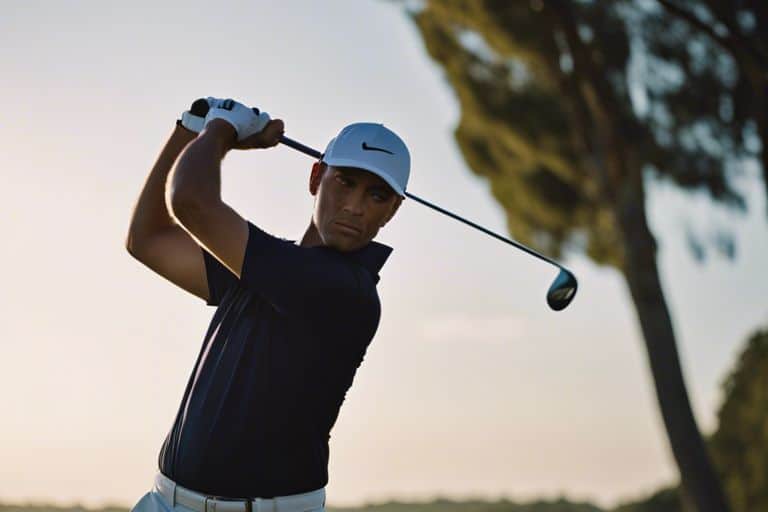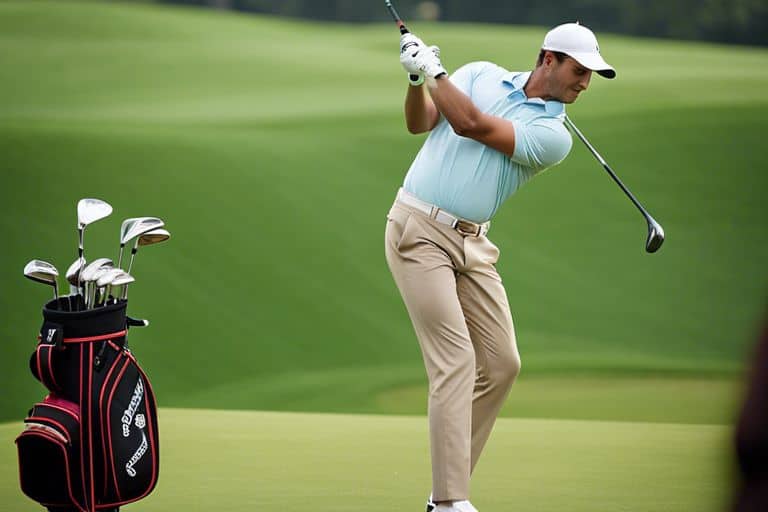How do you hit a "low hook" shot in golf?
Conjuring a “low hook” shot on the golf course can be a vital skill for navigating tricky terrain and avoiding hazards. When I find myself needing to execute this challenging shot, I focus on controlling my ball flight and angle of attack with precision.
To achieve a “low hook,” I position the ball back in my stance and close the clubface at address. As I swing through, I drive my hands forwards and rotate my body through impact to promote a lower trajectory and a right-to-left spin on the ball. Mastering this technique can give you a powerful advantage in challenging conditions.
The Mechanics of a Low Hook Shot
For golfers looking to add a low hook shot to their repertoire, understanding the mechanics behind this shot is crucial. This shot can be extremely useful in certain situations on the course, and mastering it can give you an edge over your competition. In this chapter, I will break down the mechanics of a low hook shot and provide tips on how to execute it effectively.
The Golf Swing Mechanics for a Low Hook
When it comes to hitting a low hook shot, the key lies in the golf swing mechanics. To achieve the desired result, I adjust my stance slightly, moving the ball back in my stance and closing the clubface at address. As I take my backswing, I focus on keeping my hands ahead of the clubhead and ensuring that my clubhead stays on an inside path. At impact, I release the club aggressively with my hands and wrists, imparting a significant amount of draw spin on the ball. This combination of swing adjustments and clubface manipulation is crucial in executing a successful low hook shot.
Club Selection and Ball Positioning
Choosing the right club and positioning the ball correctly are also important factors in hitting a low hook shot. I typically opt for a mid-iron club, like a 7 or 8 iron, as these clubs allow for better control and accuracy when trying to produce a low hook. Additionally, I position the ball slightly back in my stance, closer to the right foot (for right-handed golfers), to encourage a lower ball flight and promote the desired left-to-right spin. It’s important to remember that the position of the ball and the club selection go hand in hand in achieving the desired low hook shot.
By understanding and mastering the golf swing mechanics for a low hook shot, as well as making the right club selection and positioning the ball correctly, you can effectively add this shot to your arsenal. However, it’s important to practice these adjustments on the driving range before attempting them on the course. With time and dedication, you can confidently hit a low hook shot when the situation calls for it, giving your game an added level of versatility and control.

Techniques and Strategies
Clearly, hitting a low hook shot in golf requires a specific set of techniques and strategies. It’s important to adjust your grip, body alignment, stance, swing path, and follow-through to achieve the desired outcome. Let’s break down each of these elements to help you master the low hook shot.
Adjusting Your Grip for a Low Hook Shot
When hitting a low hook shot, I find it necessary to adjust my grip on the club. I slightly rotate my hands to the right on the handle, which helps close the club face during impact. This adjustment gives me more control over the ball’s flight and increases the likelihood of achieving the low hook trajectory. However, it’s crucial not to over-grip the club, as this can lead to decreased swing speed and a loss of power.
Body Alignment and Stance Adjustments
For a successful low hook shot, I emphasize the importance of proper body alignment and stance. I position my feet slightly closer together and open up my stance to the target. This adjustment allows me to swing along the desired swing path and promotes a more inside-out swing, crucial for generating the low hook. Additionally, I ensure that my body alignment is parallel to the target line, with my shoulders and hips slightly closed, further aiding in creating the desired ball flight.
Swing Path and Follow-Through Essentials
One of the most important aspects of hitting a low hook shot is the swing path and follow-through. I focus on swinging the club from the inside, allowing the clubhead to approach the ball on a shallow angle. This promotes a right-to-left spin on the ball, resulting in the desired low hook trajectory. Moreover, maintaining a strong and deliberate follow-through is essential. I ensure that my arms and hands stay connected to my body, leading to a powerful and controlled finish, which is crucial in executing the low hook shot successfully.

Practice and Troubleshooting
Despite understanding the technique and theory behind the low hook shot, hitting it consistently on the golf course will require a lot of practice. It’s important to dedicate specific practice time to perfecting this shot, and to troubleshoot any issues that may arise during your training.
Drills to Perfect the Low Hook Shot
One effective drill to perfect the low hook shot is to practice with a higher lofted club, such as a 7 iron. This will force you to focus on creating the right angle of attack and releasing the club at the right moment to achieve the low hook. Additionally, practicing with alignment sticks can help you visualize the flight path of the ball and make the necessary adjustments to achieve the desired shot shape.
Common Mistakes and How to Correct Them
One common mistake when trying to hit a low hook shot is a lack of commitment to the shot. It’s crucial to trust your swing and fully commit to the technique in order to execute the shot successfully. Additionally, failing to shift your weight properly during the swing can result in a higher ball flight. Focus on transferring your weight onto your front foot during impact to ensure a lower trajectory for the ball. Lastly, be mindful of your grip pressure as gripping the club too tightly can hinder your ability to release the club properly, resulting in a higher ball flight.

Conclusion
Presently, hitting a “low hook” shot in golf is a valuable skill to have in your arsenal, especially when faced with obstacles like trees or wind. By adjusting your stance, grip, and clubface position, you can effectively execute a low hook shot that curves around obstacles and reaches your target. With practice and patience, mastering this technique can significantly improve your overall game and give you added confidence on the course. Remember to stay committed to your setup and follow through, and with time and dedication, you’ll be hitting low hooks like a pro.






